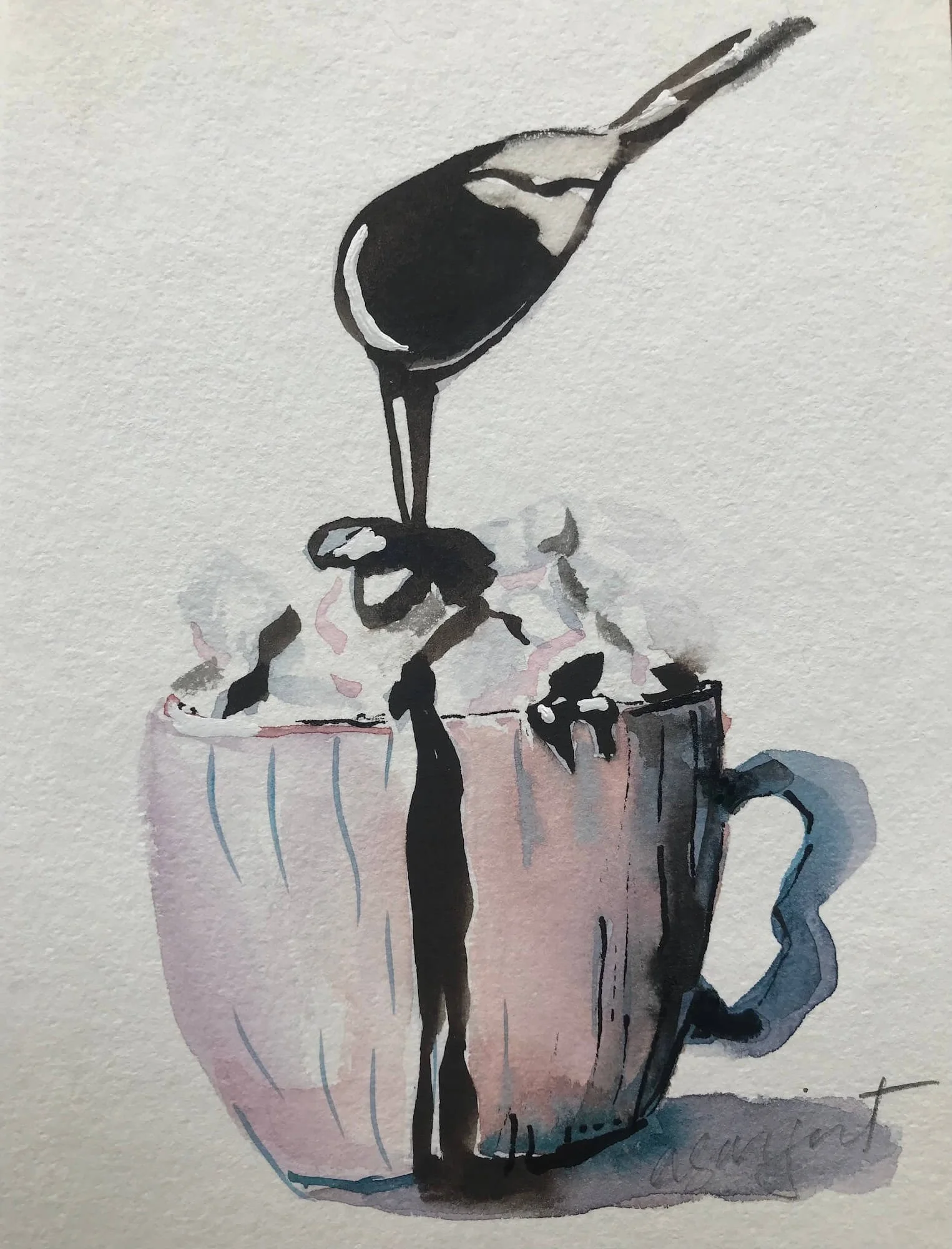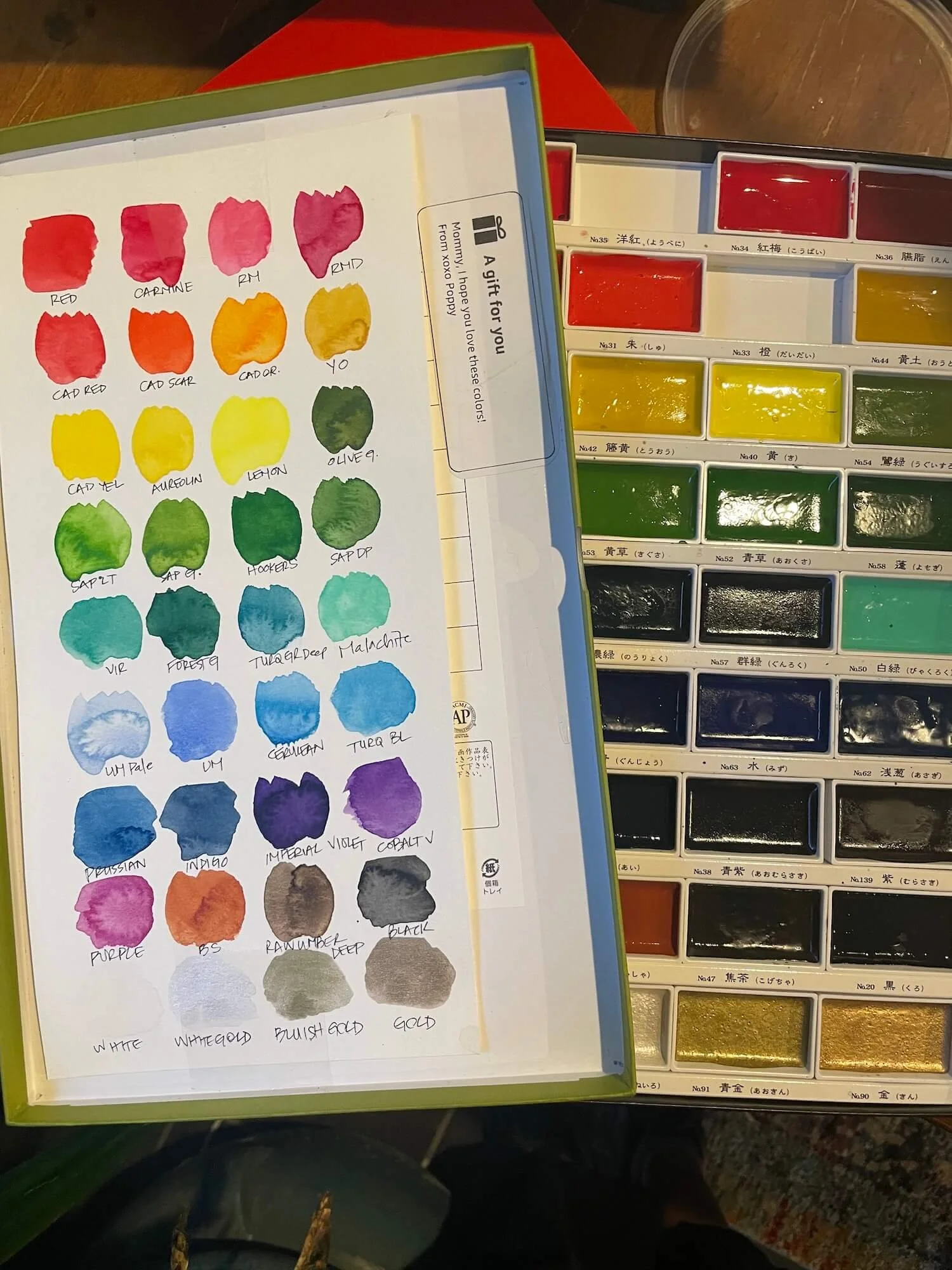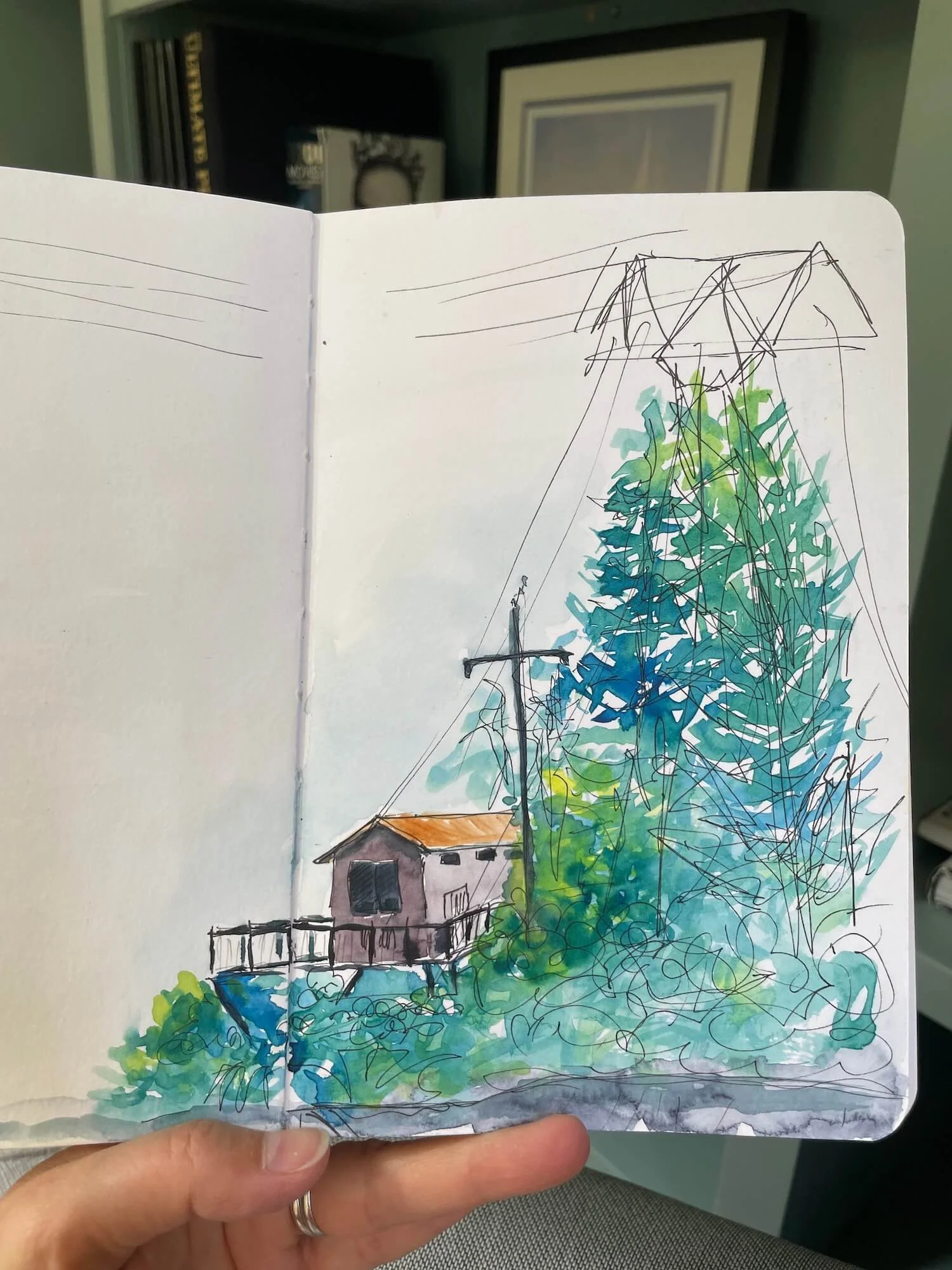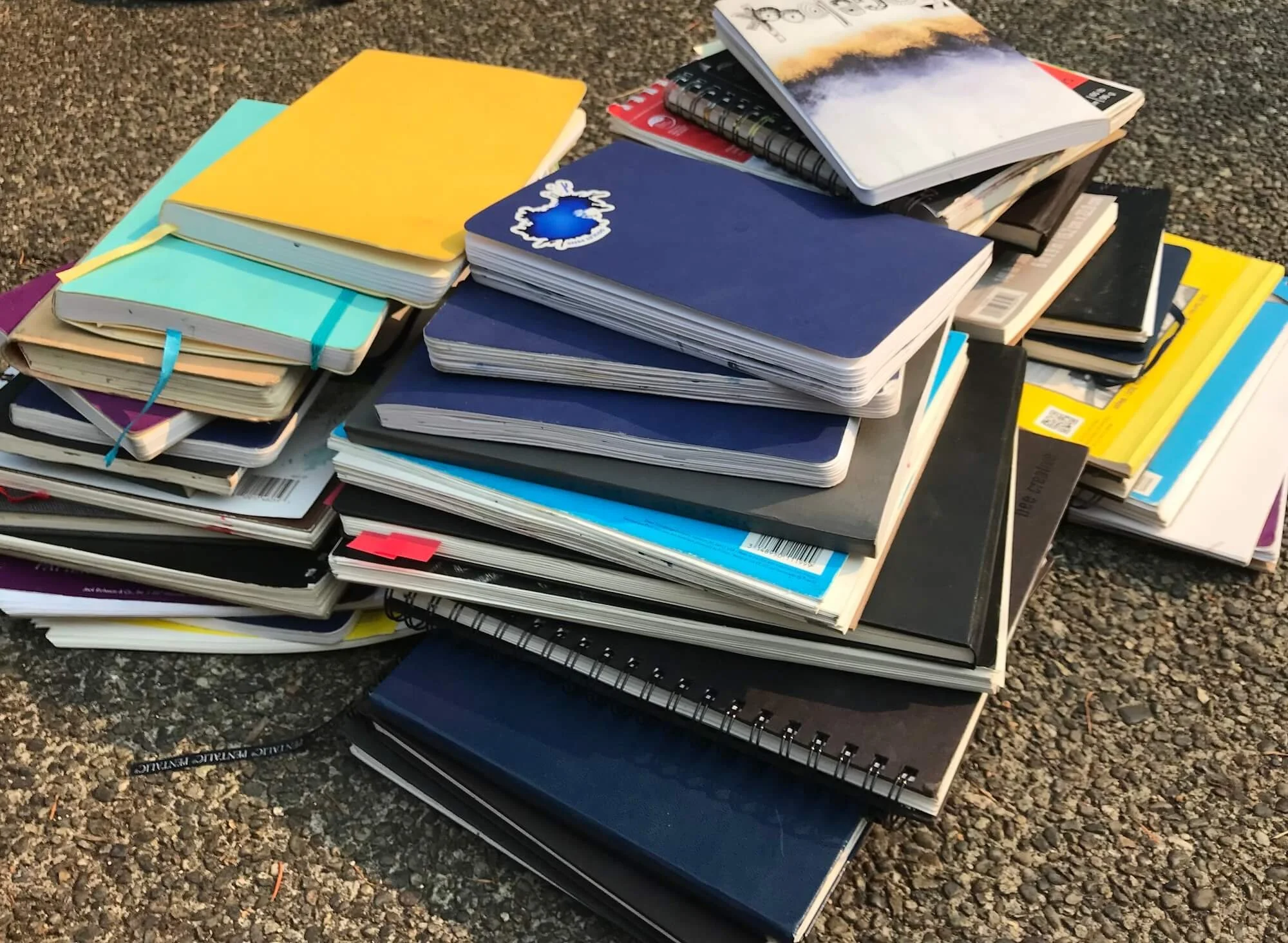Make Art Time a Habit
A regular topic in my classes is how to make time for art. Students know how good they feel after their art time, but regularly when I ask if who has done art since we last met, there are no hands. Life is busy, our minds tell us we don’t have time. We need to make art a habit – something that happens naturally and without much thought on our part, like brushing our teeth. When you get to the stage where art is a “habit,” you no longer hear the resistance in your mind. You just do it. And if you skip a day, you get back on the horse, no problem.
So, how do we make art a “habit,” so that it happens without resistance or effort?
Let’s start with a definition: I looked it “habit” in the dictionary:
1. A long, loose garment…
Wait, not that one…
2. A settled or regular tendency or practice, especially one that is hard to give up.
Wow, that’s a little judgmental. The dictionary’s example sentence is “we stayed together out of habit.” Bleck.
Here’s the psychological definition:
3. Any regularly repeated behavior that requires little or no thought and is learned rather than innate.
Now we’re talking!
Habits can be good or bad. We may have a bad connotation with the word “habit” because it is used in terms of “bad habits” – snacking before dinner, reacting in anger, scrolling social media when meant to read our book. Or we think about the habits we have not yet formed and make us feel bad: working out, cooking at home, flossing.
I read Gretchen Rubin’s book Better than Before about building a habit. She explained that we are not powerless over our habits, and, important to this topic, we can choose which habits to build. It takes effort at first, and she offers methods that help. What we forget as we are building a habit is that it does get easier. The adage about “21 days to build a habit” is outdated, and it may take less or more time. But, at some point, the resistance is gone. It’s just something you do.
Once we select a habit we want to play with, how do we develop it?
Through reinforcement and repetition.
Developing habits requires that we give them time and energy. How do we make space for that?
Here are some ideas for you to try:
1. Convenience.
Making art time convenient is the #1 way to make it habitual for us. We don’t need a table and all of our paints and buckets of water and eight hours – pack a small sketchbook and a pen to doodle or do a blind contour drawing anywhere. Waiting in line. Draw the condiments on the table while you wait for your meal at a restaurant. During a Zoom meeting. Airports are excellent places to draw. Don’t be shy about drawing in public places– I can tell you from experience, no one in paying attention. And if someone is and approaches you, most interactions are positive. Mine have always been a lovely interaction with a stranger.
For local students, the ferry is a great place to draw. When I first started drawing, I took just a journal and pen. I sketched in the journal I took on ferry (I still love these). Some artists use ballpoint pens with beautiful results. With just two items (no erasers, please!), I could get in a few minutes of art time.
For painting, is there a place in your home where you can set up your projects and leave them out? I co-opted a table off of our kitchen. I can leave my paints and projects out on the table, and they are there for me all day long, even while I tend to dinner. This eliminates one of the death knells of creating a habit – transaction time.
One of my first students put her materials in one tote. She kept her materials down in number so that they would fit. She wanted to do drawings on maps for her friends and family. I couldn’t believe the squirrel she drew after only a few classes and several months of practice. She said that she did what I had said, just a few minutes most days.
2. Set a timer.
Sometimes when life is buzzing but I need a break and some art time, I set a timer – 10-30 minutes. Although my mind will tell me I don’t have time, why shouldn’t I spend 30 minutes doing something that I love, an activity that refreshes my mind for the remaining tasks of the day? The timer gives a container to the art time so that I can focus without worrying that I will get lost. When the timer rings, I am refreshed and ready to get back to the buzz.
3. Cooperation.
For most of us, we need cooperation of others in our home to give us some space. I had some ups and downs with this process, but now am able to carve out quiet space.
If you have children, this can feel more difficult, but is it? What if you set your children up with an activity and tell them that mommy or daddy is going to spend 30 minutes doing some art. What a magical thing to model for our children – that it’s okay to take some time from life doing something we love.
4. Time of Day.
What do you do with the first half hour of your day? Do you enjoy it? Is it fulfilling you, readying and grounding you for the day?
When I was starting a new job on top of my regular law job, art wasn’t happening – there was no point in the day where I felt I could take a half hour break and get into right brain mode. I started setting a timer for 30 minutes and drinking my coffee at my art table. It was a lovely way to start the day, the only time when there were no interruptions. I still often do this, especially in the cooler months.
Some artists like to do art at the end of the day, even in bed. Try different times!
5. Schedule.
This doesn’t work for everyone, but some people stick to a schedule. What if you scheduled 30 minutes of art time into your day? I find that it is helpful to have a project going or warm-up drill selected so that when I get to this “meeting,” I know how to use the time. It is reported that Ernest Hemingway left his writing mid-sentence, so he knew where he was when he returned to his writing time the next day.
6. Weekend warrior.
Personally, I get crabby if I wait all week to make time for art on the weekend. But I do sometimes use the openness of weekends to get pages in my sketchbook going so that when I’ve just woken and am doing art (#4) or when I have 30 minutes in my schedule (#5), I have direction for the time. Weekends are a better time to choose my next project, which used to be a YouTube video and now are photos I have taken that I want to include in my sketchbook or paint.
7. Monitor.
Monitor your new habit – give yourself a star in your calendar on the days that you did it. This helps track our progress and encourage us to continue. Jerry Seinfeld reportedly wrote a joke every day. He made an X on his calendar every day he wrote a joke. His goal was to never get two days in a row without Xs.
It gets easier!
Don’t stop the practice because it’s hard. Don’t beat yourself up that you missed “again.” And for goodness sakes, do not tell yourself it’s just too hard to do it. Because it gets easier! Give yourself a mantra – every little bit counts. When I was developing a drawing and painting habit, somedays a 90 second blind contour drawing of my mug was all that I could do. That’s okay! With regular play time, things start the shift. The part of you that longs for this creative time communes with the energy in the universe that conspires to bring you what you long for.
And then, you find yourself doing it all the time. The space in your home devoted to this task has flowers on it that you want to paint. You notice things to paint on your walks. As we strengthen the muscle connecting our eyes, brain, and hand, we notice the interesting shapes of shadows, the way the light comes through the trees in springtime. We buy new art supplies and play around with them to see what they will do.
I see a passion for this creative time in each person who has stepped into my classes or shown up on Zoom. If you have any interest in that creative time, if there was a part of you that lost track of time or forgot to stand up, then you are already in love with this. It is telling you something. Creativity doesn’t hit us with dopamine like scrolling or television. It is a quieter voice inside that says,
Hey there,
You enjoy this.
You might want to come back here again.
I am always here for you.










